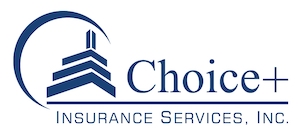Worker’s compensation insurance protects workers from work-related injuries that happen while on the job. This type of insurance policy helps cover medical bills, loss of wages, and indemnity costs.
As a doggy day care owner, it is crucial that all employees are properly trained, vaccinated and the equipment used needs to be in good working condition; while the design of the facility needs to be practical and safely constructed and laid out.
Doggy day care owners need to integrate and ingrain a safety-first type of culture daily to reduce worker’s compensation claims.
Workers that handle animals such as trainers, rescue workers, groomers and vets have to deal with unexpected and unpredictable behaviors among dogs, cats and other animals that enter animal care establishments.
From treatments to daily feeding and cleaning, there are many high-risk injury tasks involved with doggy day care type of work. It is vital to follow the correct safety practices that relate to each responsibility.
Lessen Harmful Health Risks with 20 Kennel Worker Safety Tips and with Doggy Day Care Insurance
- Before beginning, assess the health of the animal; does it look stressed? Analyze their body language before you directly interact with the animal and make sure to wear personal protective equipment (PPE) to keep you and the animal safe. By wearing long sleeves and the right gloves to protect your arms and hands, you can minimize your chances of obtaining bites and scratches from unruly and aggressive animals.
- If the aggressive animal is currently inside of a kennel or cage, do not put your fingers inside, lean or get close to the kennel or cage. All kennel and cage doors should outwardly open to lessen the chances of becoming trapped, jammed or injured; this design keeps workers and pets safer.
- Guide animals with leash tools to help with handling and maneuvering the pet.
- Washing your hands before eating food and regularly during your shift; before and after handling pets, and after cleaning up their remnants is essential to keeping yourself healthy.
- When animals need medical treatment, workers need to properly secure the animal to a facility table or keep them leveled on the floor.
- With animals that prove to be entirely aggressive, you can use a safety stick pole when administering injection medications.
- Always be aware of where your hands are located when using injection practices.
- Personal protective equipment (PPE) such as eye protection can help keep harmful liquids from coming in contact with your eyes.
- Ensure that safety procedures are closely followed when using needles; never re-cap or destroy needles. At the end of each use, dispose of them inside an appropriate biohazardous bin.
- Animal behaviors may change depending on what type of situation they are dealing with; workers will need to be prepared for unexpected twists, turns and muscle sprains that may be caused by an aggressive animal.
- Wearing the right shoes is another important tip. Non-slip shoes will help limit a major and common workers compensation claim-slips and falls. Make sure that you and your employees protect your feet from heavy objects and animals.
- Small animals will need to be closely and firmly held when in transit or during their medical treatment. Larger animals should not be lifted onto the exam table by your employees, they should be lifted with the proper equipment; lift gates or ramps.
- Waste trays should be used to help contain liquid and fecal matter contamination.
- Cages that employees move often should have wheels at the bottom to avoid employee sprains and injuries.
- Water and food bowls can be clipped onto cages or kennels to limit waste and contamination.
- Invest in auto-fill water bowls to lessen the amount of times your employees have to refill.
- For doggy day care owners with kennels, small business owners may want to implement channels that make it easier to clean-up and get rid of waste with water spray nozzles that easily flush it away.
- Ensure that all stacked cages have removable trays to collect waste and offer sealed compartments to avoid any kind of leakage.
- To avoid contracting zoonosis which is diseases transmitted from animals to humans and the other way around; wash your hands frequently, wear (PPE) gloves, do not wash cages near areas that you prepare food, don’t let animals lick open wounds or your face, and if you endure a dog/cat scratch or bite then seek the proper medical attention.
- Disinfect areas regularly and ensure that all of your employees receive the proper vaccinations; rabies and tetanus shots are common.
Choose a Smart and Safe Facility Design
By choosing a facility designed with safety at the forefront of the building strategy, small business doggy day care owners set themselves up for long-term success. Before you begin your business, think about the logistics such as adding non-slip type of floors in all walkway areas; setup your space to be efficient when it comes to safety and cleanliness.
By using stainless steel or Formica type of materials, the solid surfaces become easier to clean and disinfect; helping prevent injury and illness to animals and humans.
By following OSHA regulations, owners can create a safer culture in and around doggy day care organizations.
For doggy day care insurance, contact Choice Plus to speak with an expert insurance agent about how you can keep you and your employees safer onsite and limit your worker’s compensation claims; limit risk, in turn, save and reduce your insurance claims.
Other articles to look at:
